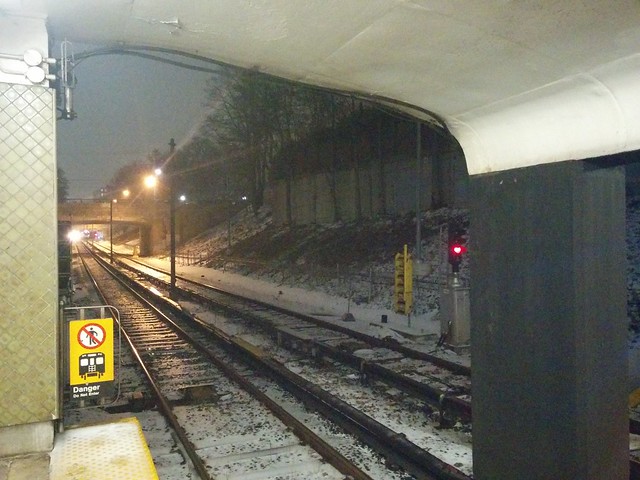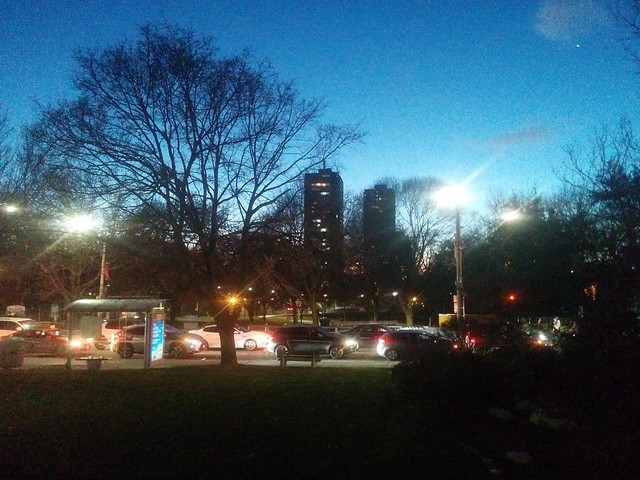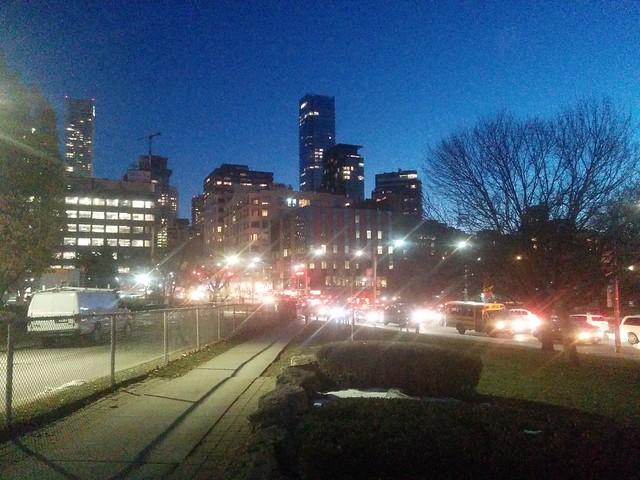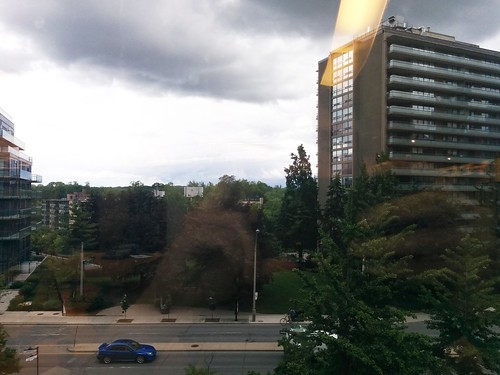Yesterday evening was rather cooler and wetter than I would have wanted, below 20 degrees and rainy. The clouds, it was pointed out to me, were so low as to touch towers in Yorkville just a couple dozen stories above the ground. Still, it was walkable, and the clouds and the wet did produce interesting effects.
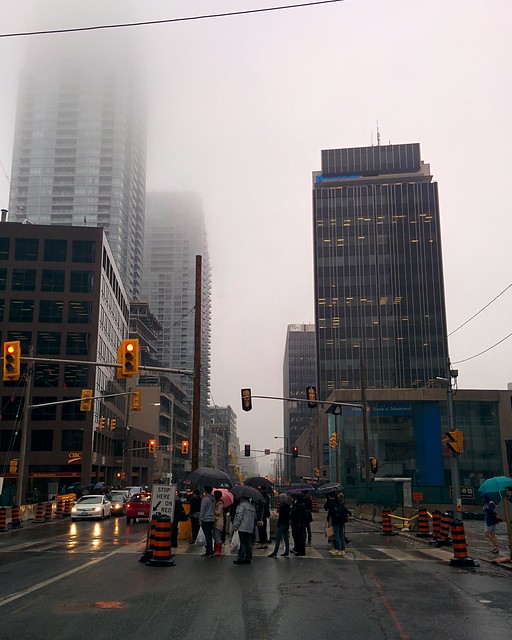







When I got off at Castle Frank Station last night around 5 o'clock, evening was already beginning to fade into twilight. The yellow leaves of fall stood out in the dim, standing east of the downtown along Yonge as the rush hour traffic inched still further east.

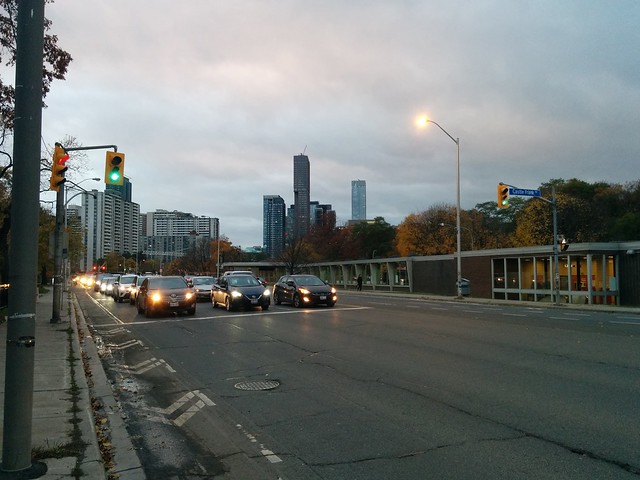
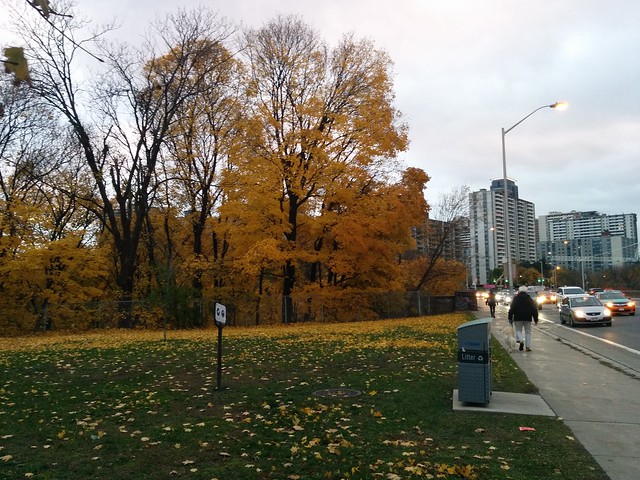







- The universities of Toronto--U of T, Ryerson, York--turn out to provide some of the best university-based incubators of high-tech business in the world. CBC reports.
- blogTO notes that a new condo development at Bloor and Dufferin, in Bloordale just where it meets Bloorcourt, is being criticized for excessive density and a lack of community facilities.
- Edward Keenan notes that Patrick Brown was right in talking about real estate affordability in Toronto as a problem. Why aren't other people following him (in this, at least)? The Toronto Star has it.
- Royson James reports on how a Seventh-Day Adventist church in western Toronto not only helped integrate immigrants from the Caribbean, but set a model for others. The Toronto Star has it.
- Dave Leblanc writes about how Rosedale was introduced to the International Style by the 1944 Hobbs Sun House, over at The Globe and Mail.

After due consideration, I selected the above photo--"Rosedale", shared by me on my blog in August in the post "Rosedale in evening"--as my submission to Flickr's Your Best Shot 2017. I liked the shot's composition and the colour, and so did Flickr. So: here it is.
The location of the Toronto Reference Library north and east of Yonge and Bloor, directly east of Yorkville and directly south of Rosedale, means that well-positioned photographers can take advantage of some excellent views. The first two photos are of Rosedale, green with trees and dense with houses, while the third is a photo of a Yorkville well into its condoization.
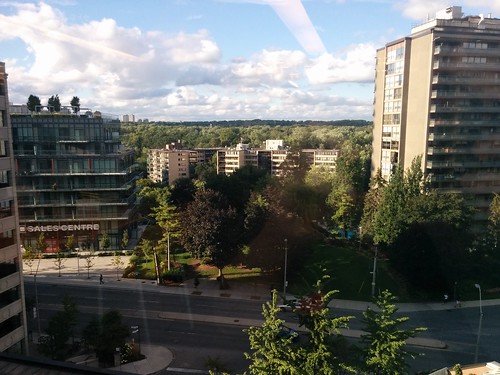

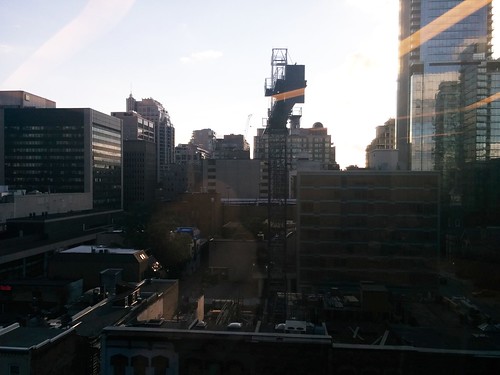



Torontoist's Sean Marshall convinces me that community opposition to a planned four-story condo tower in Rosedale does not make sense, at least not in the context of wider community needs and maybe not in a neighbourhood that already has constructions like the ones proposed on Dale Avenue.
As Toronto grows and housing prices soar, there’s a clear need for more housing units. The Greater Toronto Area can only sustain a growing population by intensifying its existing urban footprint, be it laneway housing, the redevelopment of old commercial and industrial lands (such as Honest Ed’s, Galleria Mall, or the Port Lands), or replacing low-density housing stock with new rental or condominium developments. Many of these proposals are controversial: traffic concerns are a common issue, as is the gentrification of lower-income neighbourhoods such as Parkdale or the east side of downtown. Or, long-time residents may simply resist change.
In south Rosedale, one new condominium project has proven to be very contentious. There, residents are fighting plans for a four-storey, 26-unit luxury condominium building on Dale Avenue, immediately adjacent to the Rosedale Ravine.
That’s right, a four-storey condo.
The proposed condominium apartment building includes six two-bedroom units and 20 three-bedroom units, and will replace three houses at 5, 7, and 9 Dale Avenue. The proponent is Dale Inc. (a subsidiary of Hunter Milborne Real Estate).
[. . .]
On either side of the proposed development are several similarly-sized buildings. To the east, at 21 Dale Avenue, is Kensington Apartments, a four-storey co-operative apartment building. Two doors to the west is 1A Dale Avenue, a condominium building built in 1960, which features large, impressive units. 1A Dale Avenue is three storeys at street level, but has two additional lower floors that back onto the ravine.
The Rosedale TTC station is open to the air above. In fall, in the wooded Rosedale neighbourhood, this can lend itself to some lovely scenes.
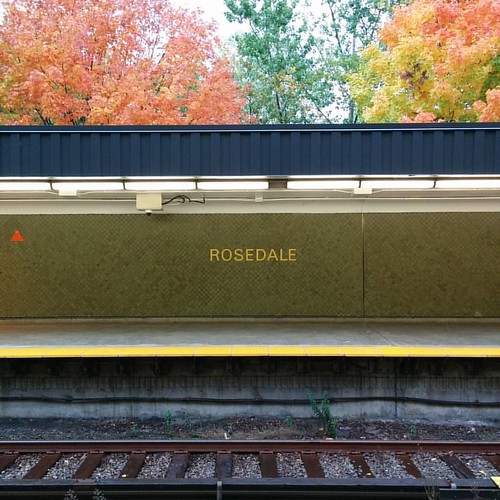





The National Post's Jake Edmiston describes how this Rosedale architectural landmark was put on sale. Beautiful photos of the house can be found via the Post's link.
Integral House, one of the most storied accomplishments in Canadian architecture, has finally found a buyer after 18 months on the market.
It was the vision of the mathematician and musician James Stewart, built with reverence to both those passions. The 18,000-square-foot house is complex, with curved glass and oak overlooking a ravine in Toronto’s Rosedale neighbourhood and a state-of-the-art concert hall that seats 150.
Stewart spent 15 years on it and $34 million. When it was finished in 2009, Glenn Lowry, director of New York’s Museum of Modern Art, hailed it as “one of the most important private houses built in North America in a long time,” during an interview with the Wall Street Journal.
The property was originally listed at $28 million in the spring of 2015, then dropped to $23 million months later. It was reduced again to $19.5 million last month and has now been acquired by one of two interested buyers for an undisclosed price, Sotheby’s International Realty Canada said Friday.
The house was known as a philanthropic hub in the city, where Stewart frequently hosted fundraisers and benefit concerts.
After his death in 2014, his family started the arduous process of finding the right buyer — one who would to continue his legacy.



